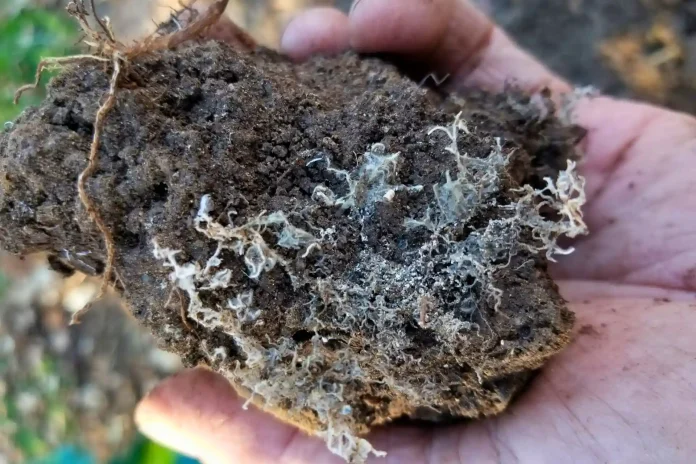Green roofs, those vibrant oases on top of buildings, are gaining popularity for their environmental benefits. From absorbing stormwater to cooling cities and providing habitat for wildlife, they offer a range of advantages. However, research reveals that green roof sustainability can be promoted, and these rooftop shelters could be even more effective with a helping hand from nature’s tiny allies: mycorrhizal fungi.
Experiment to Enhance Green Roof Sustainability
While green roofs contain impressive potential, their effectiveness often diminishes over time. This is partly due to the use of non-native plants and sterile soils, needing more diverse microbial communities present in natural ecosystems. A team of researchers from Dartmouth College set out to explore whether enriching green roof soil with these beneficial microbes could be the key to unlocking their full potential.
To learn more about land use sustainability, click here.
Solution with Native Mycorrhizal Fungi
The team established an experimental green roof in Chicago and compared two scenarios: soil inoculated with native plain microbes rich in mycorrhizal fungi and untreated soil. They planted native plants and green roof succulents in each plot and closely monitored the changes in the fungal community over two years.
The Power of Partnership Between Plants and Fungi
Mycorrhizal fungi form a symbiotic relationship with plant roots, acting as tiny extensions that help them access essential nutrients and water in exchange for sugars produced by the plants. This partnership is necessary for plants in complex environments like green roofs, facing challenges like intense sun, high temperatures, and constantly changing water availability.
Results of Long-Term Success
The study revealed a critical difference between the two treatments. Green roofs inoculated with mycorrhizal fungi displayed a more diverse and thriving fungal community compared to the untreated ones. According to the researchers, this diversity is essential for long-term green roof sustainability. Lead author Paul Metzler, soil ecology lab manager at Dartmouth, emphasizes the surprising longevity of the effects, stating, “The long-term and consistent effects of the inoculum were quite surprising, as it’s not necessarily something you would expect when working with such small microorganisms.”
The Sources of Fungal Diversity
The researchers employed a “DNA metabarcoding” technique to identify the fungal species present and find their origins. While some fungi originated from the introduced inoculum, others arrived through wind and vectors like birds or insects. This highlights the complex dynamics of green roof ecosystems and the importance of considering various sources of microbial diversity.
Also check: Secure Results of Unilever Regenerative Agriculture Project
Green Roofs a Dynamic Part of Ecosystems
The study emphasizes the need to move beyond the “set it and forget it” approach to green roofs. Senior author Bala Chaudhary, an associate professor of environmental studies at Dartmouth, says, “Green roofs have a shelf life, and they’re not always the self-sustaining ecosystems we think they are.” By actively managing soil microbial communities, we can unlock their full potential and contribute to the climate resilience of urban areas.
Chaudhary further emphasizes the importance of studying urban ecosystems like green roofs, stating, “Our cities could be a window into the future. They are experiencing the impacts of climate change in an intensified way, which makes them a great microcosm to study some of these impacts below ground.” By understanding and harnessing the power of beneficial microbes like mycorrhizal fungi, we can create more resilient and sustainable urban environments for the future.
Further Considerations and Future Research
While the study demonstrates the potential of mycorrhizal fungi for improving green roof sustainability, further research is needed to explore long-term effects on different plant communities and environmental conditions. Additionally, the cost-effectiveness and flexibility of large-scale applications need to be considered. Nevertheless, this research opens exciting possibilities for enhancing the benefits of green roofs and promoting sustainable urban development.



